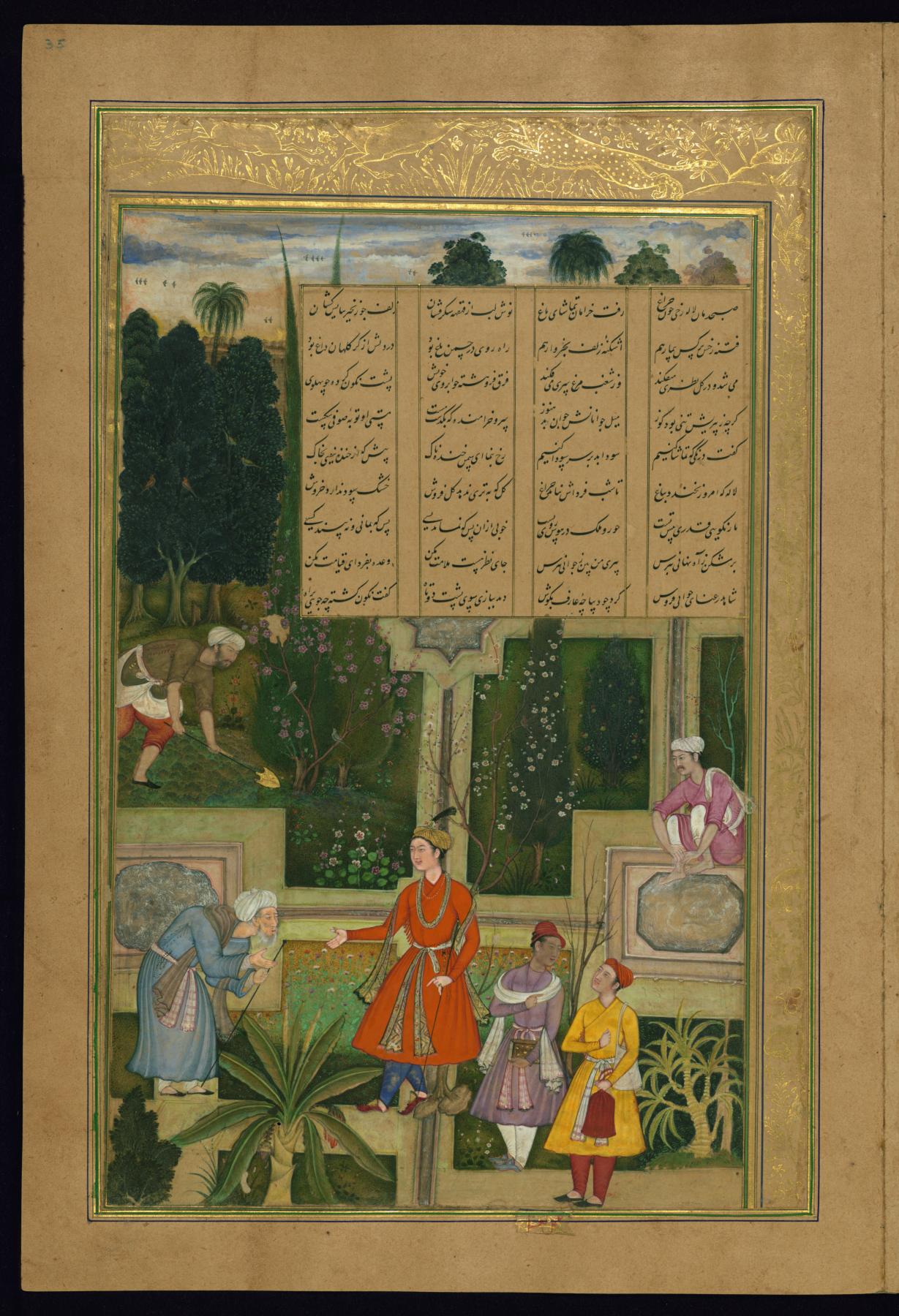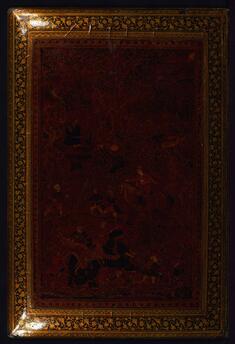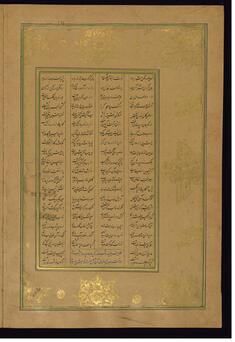An Old Sufi Laments His Lost Youth
In this garden scene, an elderly sufi (an individual who follows the Islamic mystical tradition) gestures toward a handsome young man in an orange robe. On the left, a man tends to the soil, and on the right, a gardener washes his feet. The water channels, pools, flowerbeds, planted and paved areas, and pathways were typically seen in Mughal India, where garden design reached a high point. Notice how the components of the design are aligned, parallel and perpendicular. Chahar-bagh, the formal garden divided into four parts by straight water channels, was extremely popular in Iran and India.
Provenance
Provenance (from the French provenir, 'to come from/forth') is the chronology of the ownership, custody, or location of a historical object. Learn more about provenance at the Walters.
Muhammad Zaki, 1241 AH/AD 1825-1826 [mode of acquisition unknown] [oval seal, fols. 1a, 211a]; 'abd al-raji Muhammad Shafi', 1247 AH/AD 1831-1832 [mode of acquisition unknown] [rectangular seal fols. 1a, 211a]; Muhammad 'Ali [date and mode of acquisition unknown] [large oval seal with no date on fol. 211a]; Henry Walters, Baltimore [date and mode of acquisition unknown]; Walters Art Museum, 1931, by bequest.
Exhibitions
| 2012 | Paradise Imagined: Images of the Garden in the Islamic and Christian World. The Walters Art Museum, Baltimore. |
| 2005-2006 | Pearls of the Parrot of India: The Emperor Akbar's Illustrated "Khamsa," 1597-1598. The Walters Art Museum, Baltimore; The Metropolitan Museum of Art, New York. |
Geographies
Pakistan, Lahore (Place of Origin)
Measurements
H: 11 1/4 x W: 7 1/2 in. (28.5 x 19 cm)
Credit Line
Acquired by Henry Walters
Location in Museum
Not on view
Accession Number
In libraries, galleries, museums, and archives, an accession number is a unique identifier assigned to each object in the collection.
In libraries, galleries, museums, and archives, an accession number is a unique identifier assigned to each object in the collection.
W.624.35A




